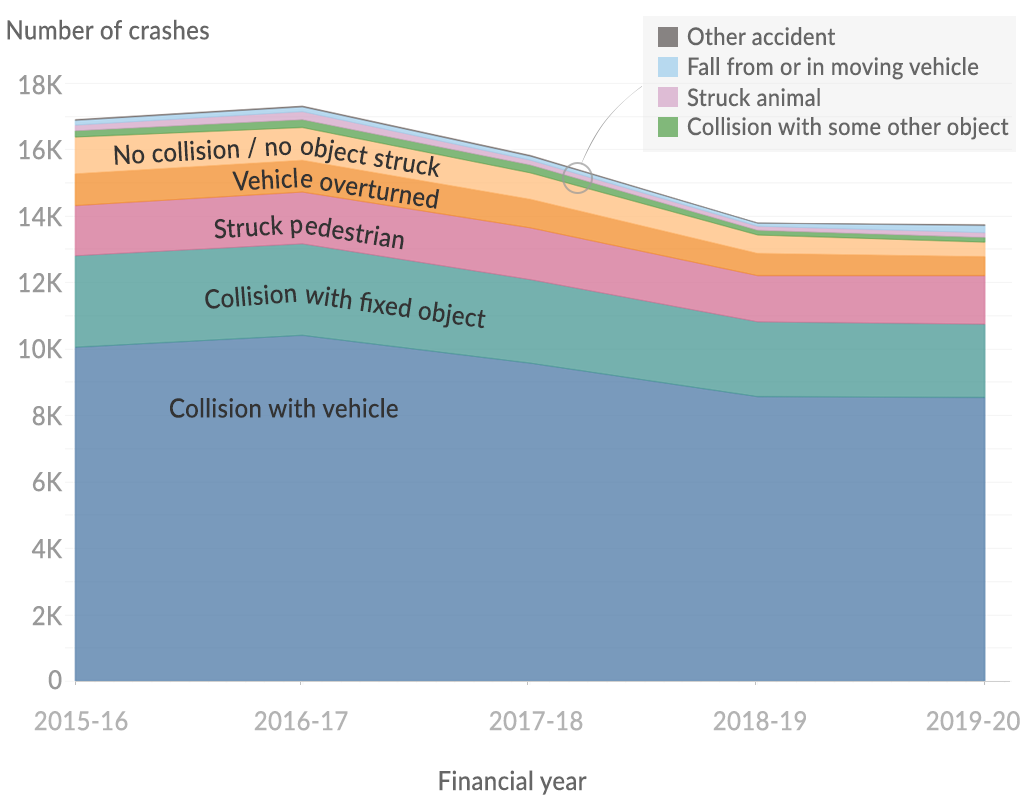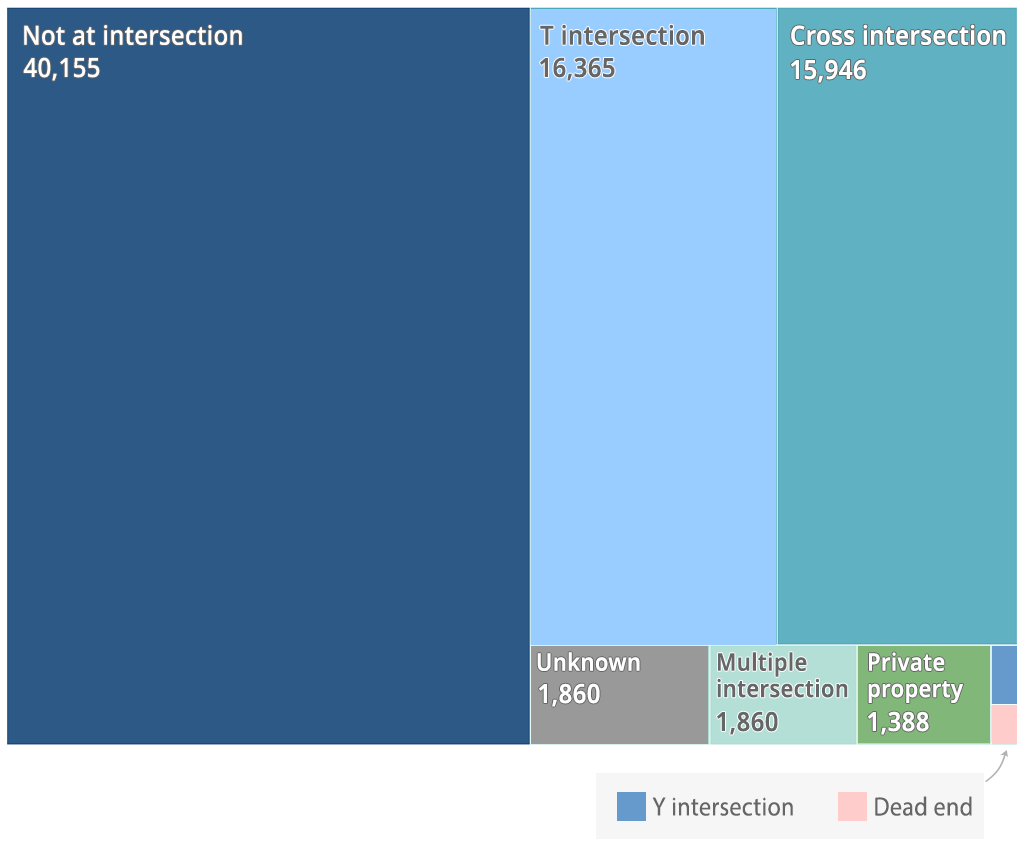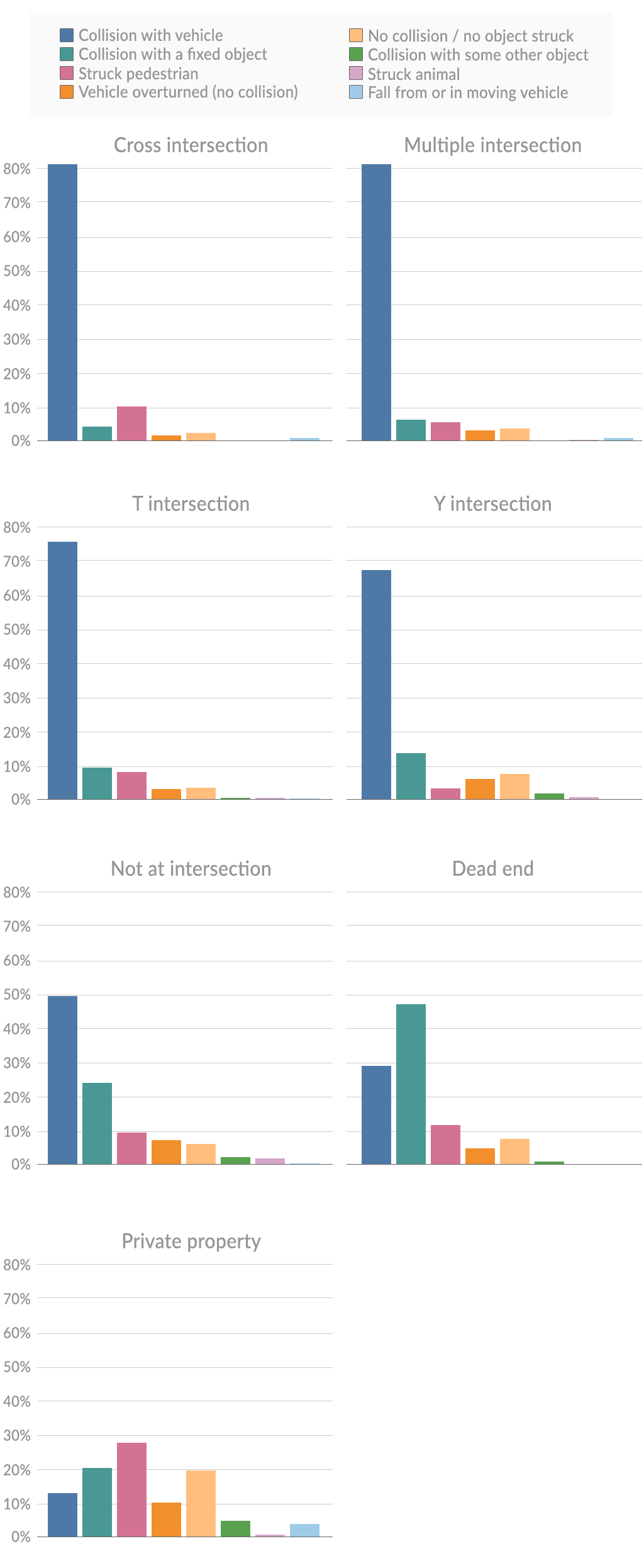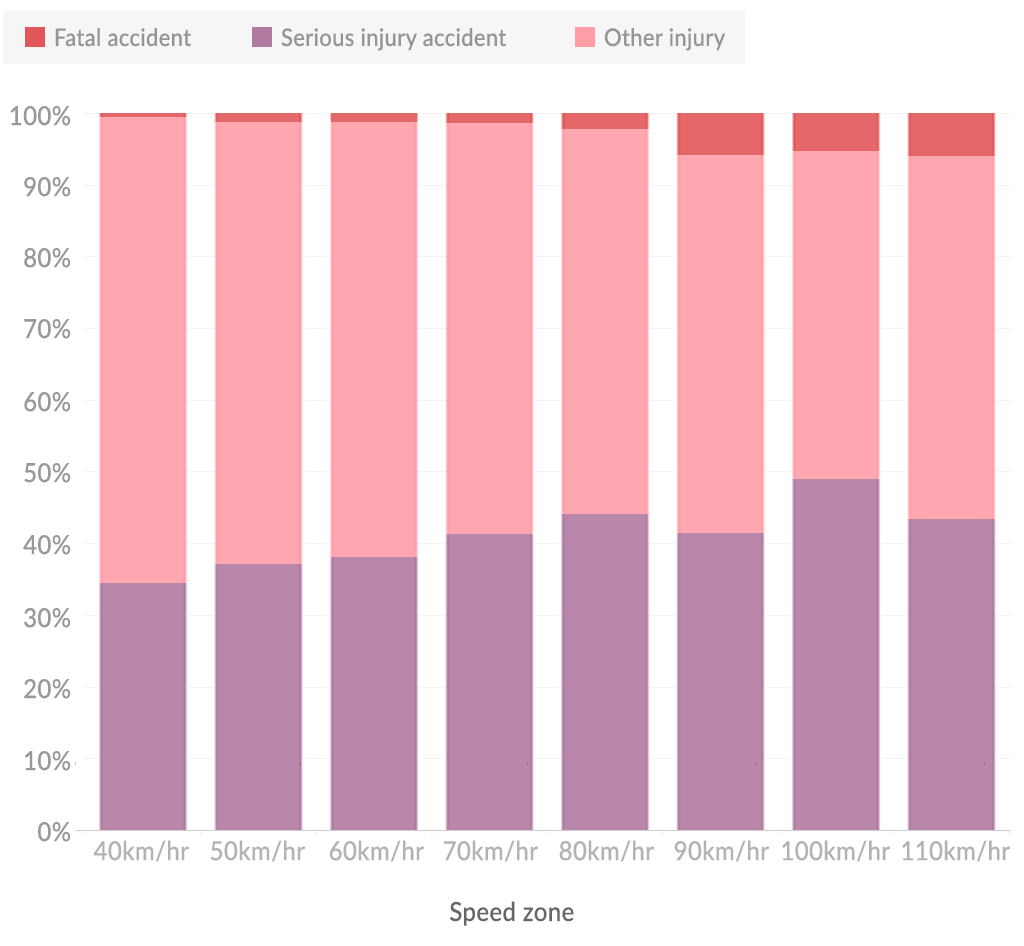VicRoads recently updated data on road that resulted in injuries and fatalities on the Victorian government’s open data portal, . The data contains details of road accidents for the five financial years starting July 2015 and ending in June 2020. It allows users to analyse fatal and injury crash data based on crash type, road geometry, speed, user type, time, location, conditions, object hit and many other factors.
Crash types
Overall, the number of crashes resulting in injuries or fatalities reduced during the period analysed, with a peak of 17,298 crashes in 2016-17 down to 13,726 in 2019-20.
Road crashes resulting in injuries and/or fatalities, 2015-16 to 2019-20

Not surprisingly, collisions with other vehicles were responsible for most injuries and fatalities (8,539 crashes in 2019-20). Other significant contributors were crashes with fixed objects or accidents where a vehicle struck a pedestrian.
Number of road crashes by accident type, 2015-16 to 2019-20

Road geometry
In terms of the road type (or road geometry), the two predominant geometries where crashes occurred were along general sections of a road (i.e. not intersections) and crashes at intersections (T-intersections, cross intersections, etc.). There were also 1,388 accidents on private properties and 105 accidents at dead ends.
Number of road crashes by road geometry, 2015-16 to 2019-20

If we look at the proportion of crash types on different road geometries, we can see that collisions with vehicles are the highest proportion of crashes within all road geometries except dead ends and private properties. But intersections have a higher proportion of crashes where vehicles have collided with other vehicles, compared to crashes that did not occur at intersections.
And private property accidents (total of 1,388 in the 5-year period) had a high proportion of accidents where a pedestrian was struck — 48 of those resulted in fatalities.
Proportion of accident types by road geometry, 2015-16 to 2019-20

Speed
Speed is another obvious factor in crashes resulting in serious injury or death. There are many different speed zones in Victoria and the majority of crashes occur in a 60km/h zone, which is the most common speed zone.
If we look at different speed zones and the severity of accidents, we can see that higher speed limits have a higher proportion of crashes that resulted in fatalities. In a 60km/hr zone, 1.15% of crashes result in fatalities. But as the speed limit increases to 90km/hr and beyond, this increases to more than 5%.
Proportion of accident severity by speed zone, 2015-16 to 2019-20

The VicRoads crash data includes many other factors that could be analysed: whether cyclists or motorcyclists were involved, whether the driver is considered old, the location of the crashes, the lighting conditions and, perhaps most importantly, DCA — the codes classify each accident type in more detail (for example, whether it was a rear end or head on collision, whether the vehicle veered to the right or left, whether the vehicle was turning, etc).
We recommend consulting the researchers or data custodians to understand the nuances of the data and know the limitations of the conclusions that can be drawn. And if you have analysed this dataset (or a related dataset), we’d love to hear from you! Get in touch via Twitter ( ) or the website.
The VicRoads data for crashes resulting in injuries and fatalities is available via . There are also additional crash statistics available via the VicRoads .
LinkedIn: ; Department of


